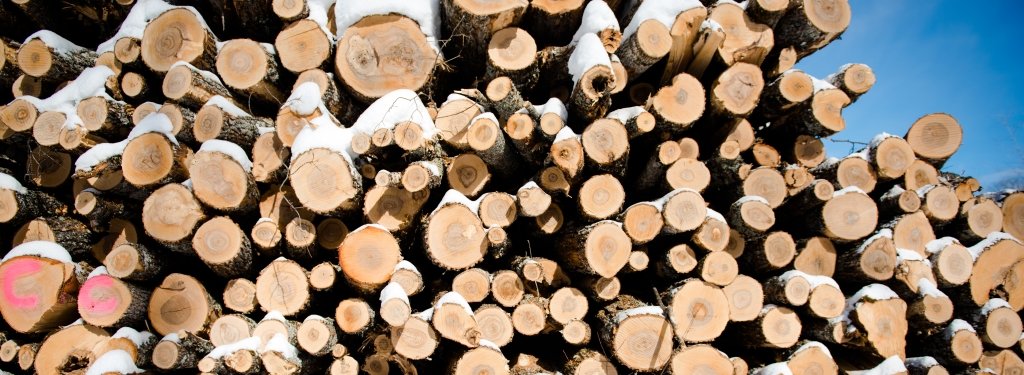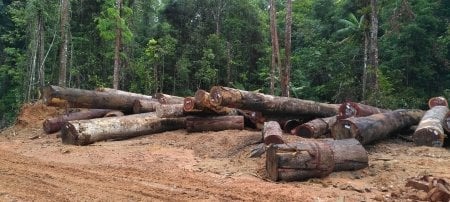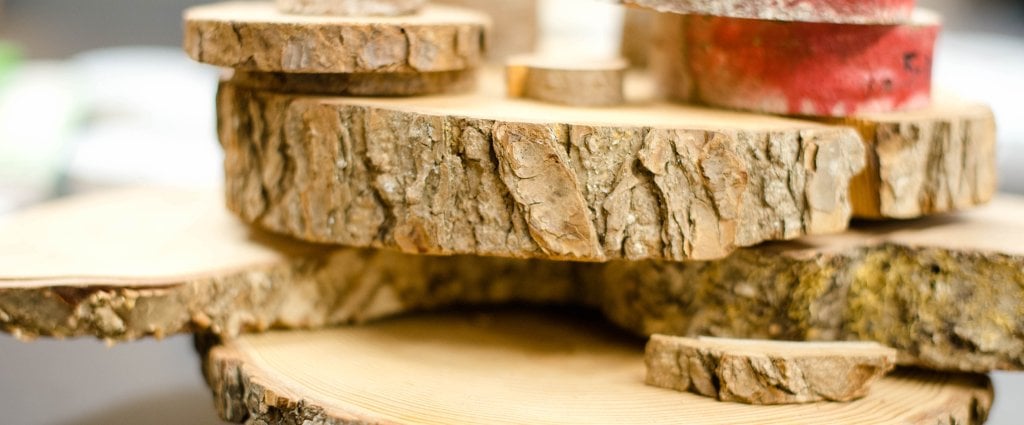In his guest blog, Mark Rudnicki, director of the Michigan Forest Biomaterials Institute, explains the role of forests in a sustainable future. Sustainably harvested trees could become our cars, clothes and skyscrapers.
The first practical electric vehicle was on the roads by the 1870s and by 1905 nearly one third of all the vehicles in the United States were electric. But by 1935, cheaper and longer-range gas vehicles all but eliminate this technology. Today electric is roaring back, and nearly all automakers will offer over a dozen models by 2022 — in just three years — with probably all-electric line ups in five to seven years. Petroleum took over and then lost the transportation sector for good reason: Its use is rapidly making our planet unsuitable for humans.
Can we expect a mirror pattern of development for plastics? The first plastics were developed near the end of the 19th century and were bio-based. Petroleum-based plastics took off after World War I and quickly came to dominate the plastics industry, despite famous bio-based plastic proponents like Henry Ford who developed the famous soybean-based plastic car in 1941.
Bio-plastic
But the problem with petro-based plastics is more than just more carbon in the atmosphere. Much of the vast amount of plastic produced is expected to be used for 10 minutes and then thrown away – and then last for another 1,000 years, continually causing harm to the ecosystems we depend on.
A relatively small amount of second-generation bio-plastics are now on the market and use agricultural residuals and waste as well as wood. To grow the market share we need to use all potential renewable resources. However, wood resources have generally been overlooked as a bio-plastic/bio-product feedstock since wood residuals are not easily centralized like agricultural residuals such as corn stover. Tougher logistical challenges for wood mean higher transportation costs and so we must seek higher value products than energy. Not that renewable energy from wood is a bad thing, it’s just that we can and must add more value to compete with petroleum-based products.
The ‘cracking’ of petroleum is the process by which we make fuels and the polymers needed for plastics and a vast array of chemical products. The much lesser known bio-based equivalent is the biorefinery that ‘cracks’ low-value wood and wood residuals into most anything oil can be make into.
Biomaterial Markets Worldwide
In the U.S., many people think biorefinery is the same as ethanol production, which is only one of many possible products. Liquid fuel is the among the lowest value bulk commodities from a biorefinery, but largely dominates the market in the U.S. However, if we look abroad to Europe, we see higher value chemicals being produced for a rapidly emerging diverse market of bio-based products.
For instance, in Finland, they have recently completed a $1.5 billion biorefinery (renamed a bioproduct mill to change people’s understanding of its purpose) that produces wood pulp, pine oil, turpentine, biogas, sulfuric acid and renewable heat and power for the neighboring city. And that’s just the beginning.
Bio-Textiles
We all need clothes. Right now, most of the world’s textiles are plastics made from petroleum – polyester, acrylic and nylon. But textiles can be made from wood and they have large environmental advantages over plastic clothes, and even cotton, as they require 99 percent less water and little or no pesticides.
The environmental advantage for wood textiles is so great that four additional billion-dollar biorefineries are planned or under construction in Finland and are all expected to focus on the latest textile technologies. Michigan could also be an international leader in biomaterials and even biotextiles.
Michigan Biomaterials
When we examine Michigan’s situation, we see a large industrial base of automobiles, plastics, office furniture and processed chemical products. All could be transitioned to largely bio-based feedstocks. Michigan also produces many of those renewable feedstocks with a strong agricultural sector and a forest that is ranked 5th in the U.S. for productive timberland.
Currently over a third of Michigan’s forest harvest goes to pulp and paper but as we move toward digital media, we see a steady 6 percent decline of graphic papers every year – here and around the world. This is an opportunity to shift into the markets of the future! Bio-based plastics and other materials can convert low-value pulp wood as well as wood residuals from sawmills, furniture manufacturing, urban wood and logging into value-added products. This sort of transition is expensive and difficult, but certainly possible as we see from the Nordic initiatives that are spreading quickly across Europe.
Finally, I must mention the impulse many people have when they hear some markets for trees are in decline: Great, less tree cutting, more forest. Yes, but it also means more use of fossil fuels for all the things that a tree can do and more fossil carbon in the atmosphere. These are the choices and there are always tradeoffs. Michigan’s forests are responsibly and sustainably managed and these practices won’t change just because markets are shifting around. By making the wood (and especially the wood residuals) more valuable, it is reasonable to expect there will be more funds for conservation and more likely more trees since markets create more of what is in demand, not less. So, remember, recycle paper and wood not to save a tree, but to wisely conserve resources and reduce our use of fossil fuels.
Michigan Forest Biomaterials Initiative (MiFBI)
MiFBI is pushing forward progress toward circular bioeconomy through educational efforts throughout the state. We have strategically focused on areas important to Michigan communities and coincide with emerging technologies including Kraft lignin innovation, wood recycling, and mass timber buildings.
This year’s conference theme is “The circular bioeconomy – a viable path to a sustainable future.” The theme highlights both the circular nature of the bioeconomy and the critically important, low carbon contribution of renewable forest resources. Learn more at mifbi.org and register for the conference.
Michigan Technological University is an R1 public research university founded in 1885 in Houghton, and is home to nearly 7,500 students from more than 60 countries around the world. Consistently ranked among the best universities in the country for return on investment, Michigan's flagship technological university offers more than 185 undergraduate and graduate degree programs in science and technology, engineering, computing, forestry, business, health professions, humanities, mathematics, social sciences, and the arts. The rural campus is situated just miles from Lake Superior in Michigan's Upper Peninsula, offering year-round opportunities for outdoor adventure.





Comments